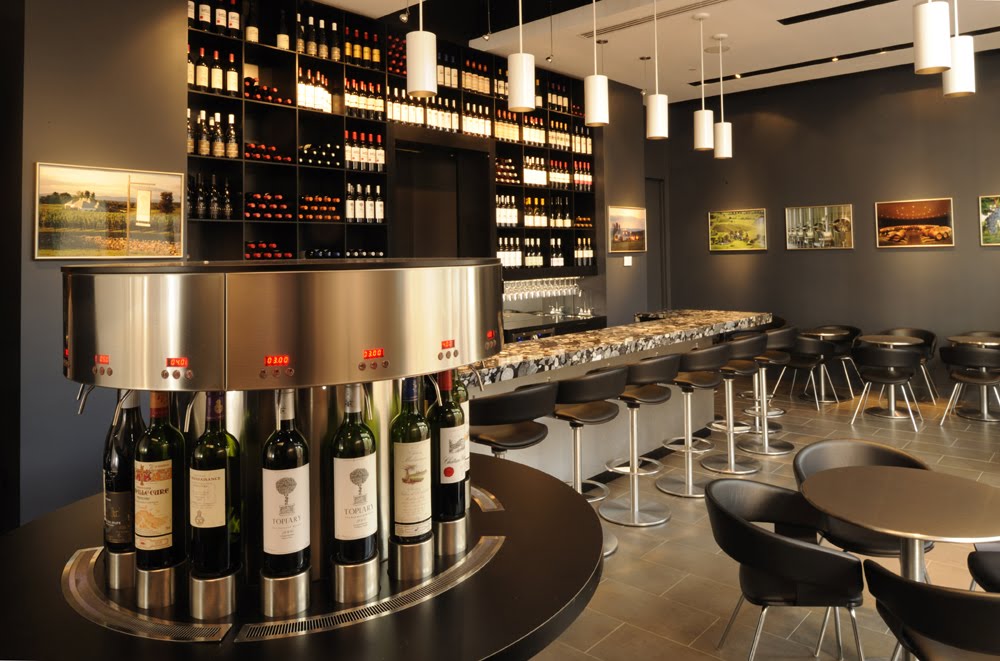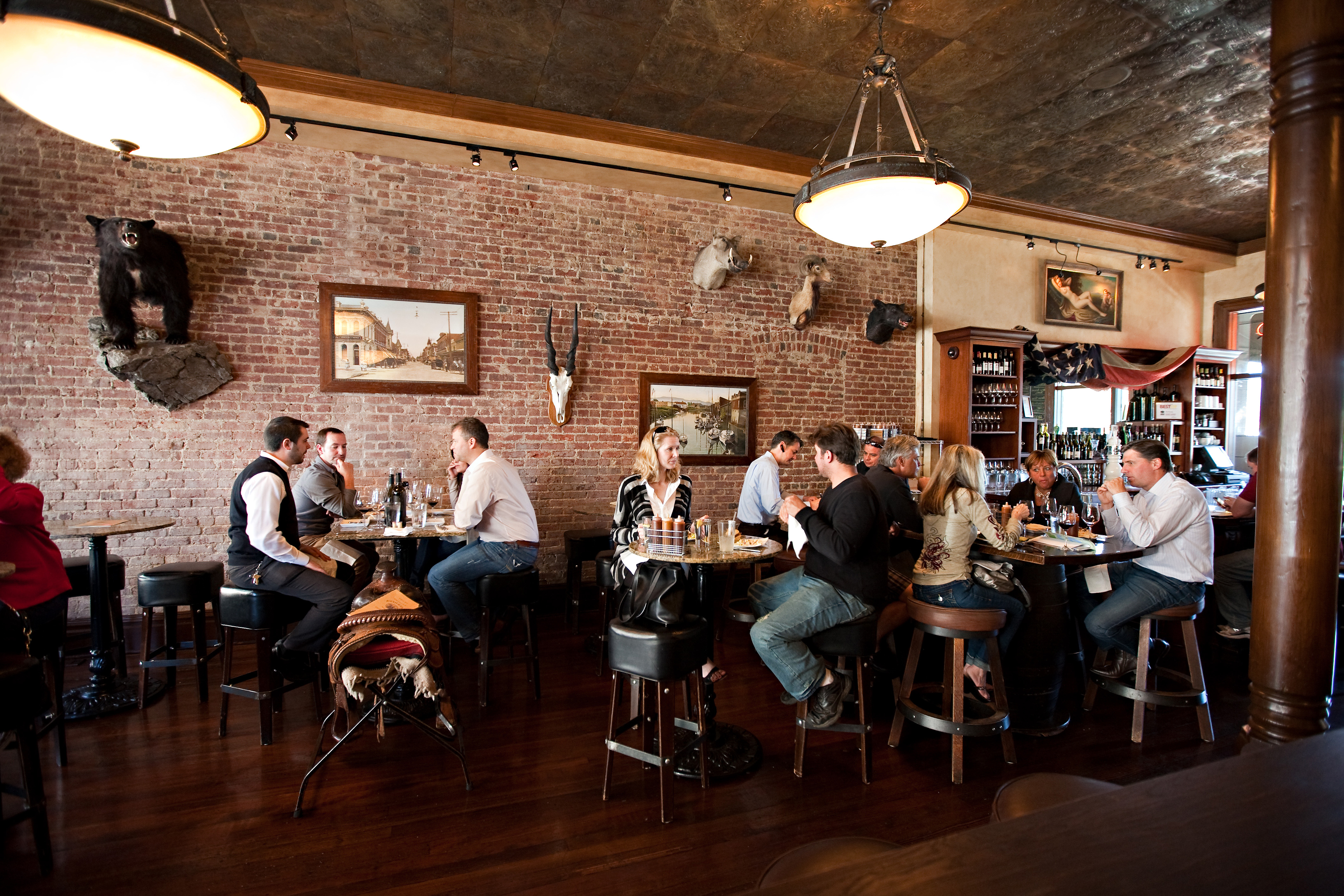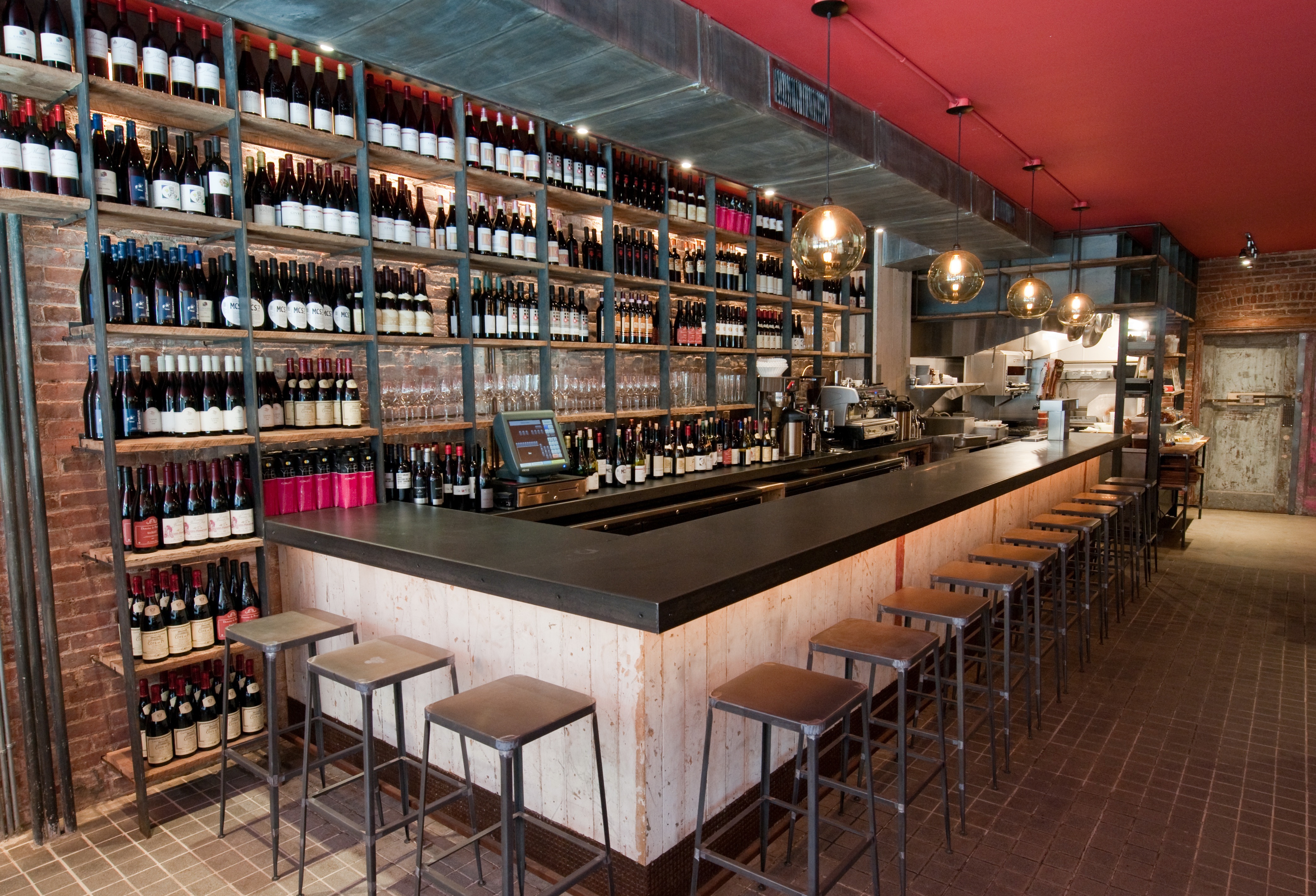Wine bar
Originally bodega in Spanish the term for a storage or cellar. Only much later did the term " wine bar " was almost exclusively with " wine cellar " or associated " wine shop ".
Rural Bodegas
In the country, the prevailing subsistence economy, but most of the houses did not have a basement; only in the course of time these were - depending on the particular landscape and soil conditions - excavated or driven into the natural rock, the input often bricked semi above ground and was covered with stones and a thick layer of soil. To avoid an increase in temperature and the test flight of birds, bats and insects and to ensure a certain humidity was entirely dispensed with window; the lighting was done by torches, candles, pine chips, etc. In such historical- rural cellars were both foods such as ham ( jamón ), sausages ( chorizos ), olives ( aceitunas ) etc. as well as wine barrels and cool against pests (mice, insects, etc. ) and rot fungi are stored protected. The cool temperatures in these cellars have meant you can get - especially in summer - until the late evening hours stayed here and be happy with the family ate together and drank. Sometimes relatives or neighbors were invited, who participated with Food and beverages brought the evening meal or drink.
Urban Bodegas
With increasing size of some wineries in the late 19th century, developed the need to build large storage rooms. The ceiling height in the brick (urban) Bodegas makes it possible to maintain the temperature throughout the year at a stable level. The buildings usually have high-altitude window, which provided enough light and above all sufficient air circulation guaranteed; in addition, avoid shape and placement of the window the direct sunlight on the valuable wine barrels. The floors in the winery buildings formerly consisted of " tierra de albero ", a mixture of small stones and sand, and were watered twice a day during the summer to ensure a humidity of about 70 percent. In addition, the walls contribute to the development of a micro-climate in the bodegas - they are rarely more than 60 inches thick and built according to the traditional "Canto " method. These factors contribute to a perfect crianza, which can best be translated as " development process".
Others
In the Spanish city centers are often found small bodegas ', where next to the wine bar and small plates ( tapas or rationes ) are served, so that this term is translated as wine bar, even if such facilities are more like bars.
The term ' Bodega ' means today - in addition to the private wine cellar - primarily commercial wineries, wine shops and wine bars. In most bodegas can taste locally produced or offered products and also buy. Usually there are guides, that explain how wine, sherry or brandy are produced.








